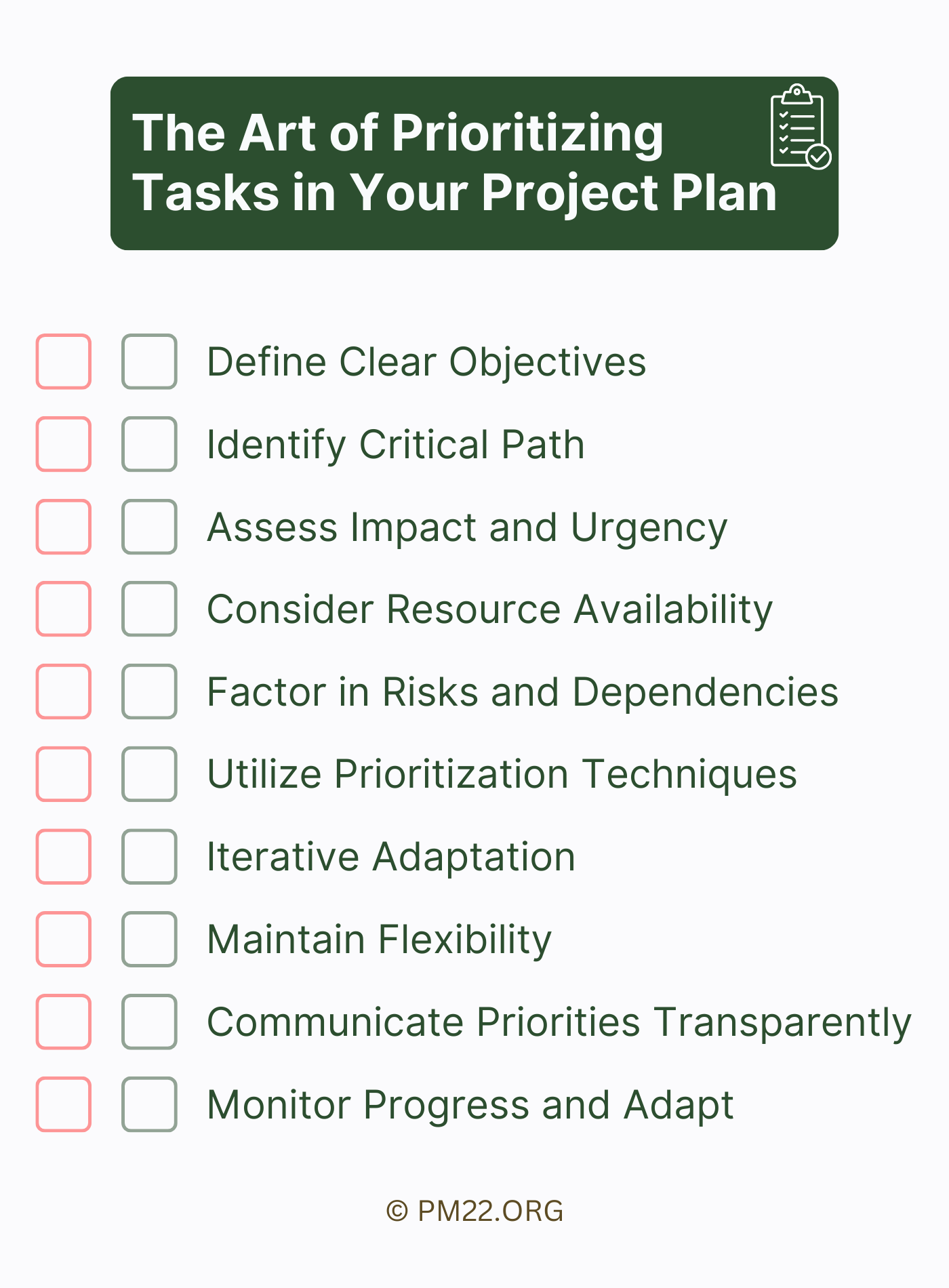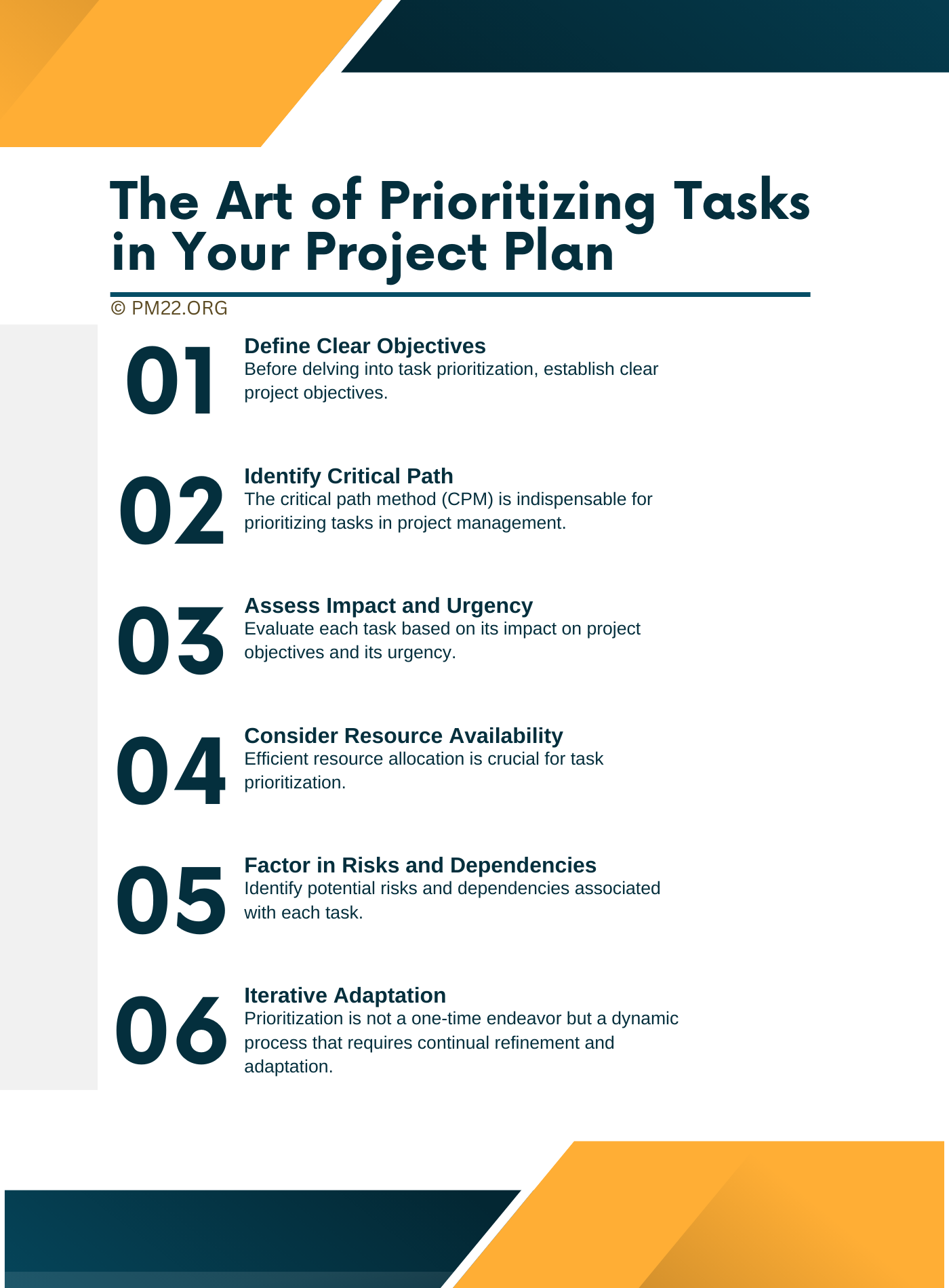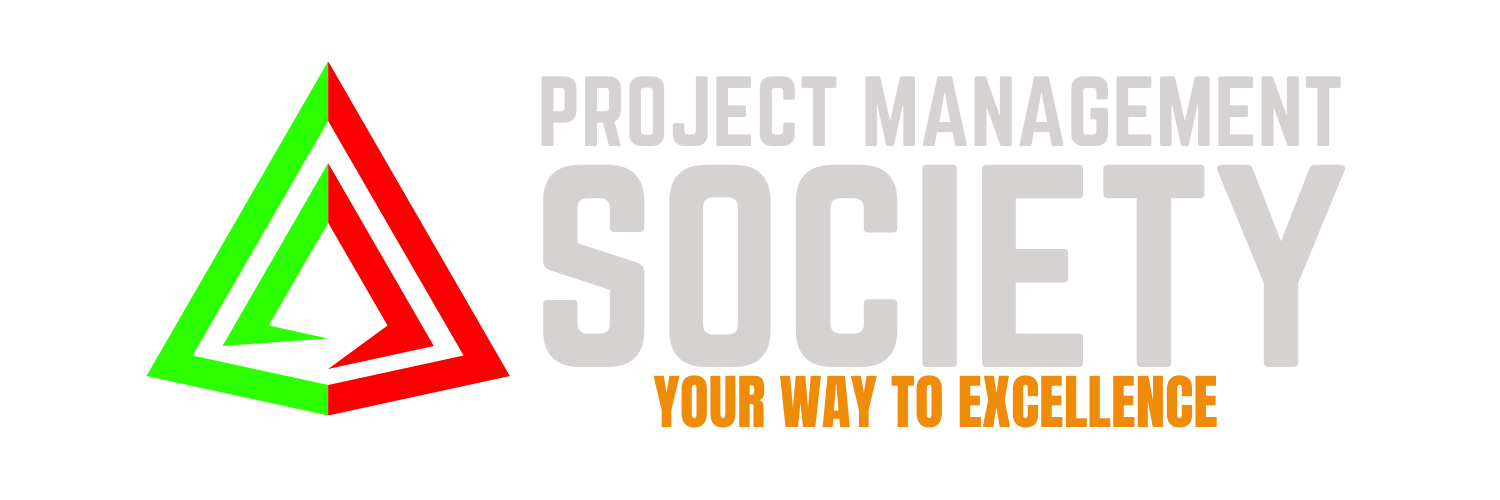 In the bustling realm of project management, success hinges not only on meticulous planning but also on the astute prioritization of tasks. A well-crafted project plan serves as a roadmap, guiding teams through the labyrinth of deadlines, milestones, and challenges. However, without effective prioritization, even the most comprehensive plans can unravel, leading to delays, budget overruns, and frustrated stakeholders. Mastering the art of prioritizing tasks is therefore paramount for project managers seeking to navigate the intricacies of project execution seamlessly.
In the bustling realm of project management, success hinges not only on meticulous planning but also on the astute prioritization of tasks. A well-crafted project plan serves as a roadmap, guiding teams through the labyrinth of deadlines, milestones, and challenges. However, without effective prioritization, even the most comprehensive plans can unravel, leading to delays, budget overruns, and frustrated stakeholders. Mastering the art of prioritizing tasks is therefore paramount for project managers seeking to navigate the intricacies of project execution seamlessly.
Prioritization isn’t merely about arranging tasks in chronological order; it involves a nuanced understanding of project objectives, constraints, and dependencies. Here are some strategies to help you refine your prioritization skills and orchestrate project success:
- Define Clear Objectives: Before delving into task prioritization, establish clear project objectives. Understand the overarching goals and deliverables, as well as the critical success factors. Aligning tasks with these objectives ensures that your prioritization efforts are purpose-driven and contribute directly to project success.
CLICK HERE TO DOWNLOAD 300+ PROJECT MANAGEMENT TEMPLATES & DOCUMENTS IN EXCEL
- Identify Critical Path: The critical path method (CPM) is indispensable for prioritizing tasks in project management. By identifying the sequence of tasks that determines the shortest duration for project completion, you can pinpoint critical activities that must be prioritized to prevent delays in the project timeline.
- Assess Impact and Urgency: Evaluate each task based on its impact on project objectives and its urgency. High-impact tasks that significantly contribute to project goals should receive top priority, especially if they have looming deadlines or dependencies on other activities.

- Consider Resource Availability: Efficient resource allocation is crucial for task prioritization. Take stock of available resources—human, financial, and material—and prioritize tasks accordingly. Allocate resources to critical activities to ensure smooth progress and mitigate resource constraints that could impede project execution.
- Factor in Risks and Dependencies: Identify potential risks and dependencies associated with each task. Prioritize tasks with high-risk factors or critical dependencies to minimize project vulnerabilities and avoid cascading delays caused by unresolved issues or bottlenecks.

- Utilize Prioritization Techniques: Various prioritization techniques, such as the Eisenhower Matrix, MoSCoW method, or weighted scoring models, offer structured approaches to prioritize tasks based on criteria such as importance, urgency, and feasibility. Experiment with different techniques to find the most suitable approach for your project.
- Iterative Adaptation: Prioritization is not a one-time endeavor but a dynamic process that requires continual refinement and adaptation. Regularly review and reassess task priorities based on changing project dynamics, stakeholder feedback, and emerging risks or opportunities.
CLICK HERE TO DOWNLOAD 300+ PROJECT MANAGEMENT TEMPLATES & DOCUMENTS IN EXCEL
- Maintain Flexibility: While prioritization provides a roadmap for project execution, it’s essential to remain flexible and responsive to evolving circumstances. Be prepared to adjust priorities in real time to address emerging issues, seize opportunities, or accommodate changes in project scope or objectives.
- Communicate Priorities Transparently: Clear and transparent communication is key to effective task prioritization. Ensure that team members understand the rationale behind task priorities, including the strategic objectives they support and the constraints they address. Encourage open dialogue and collaboration to foster a shared understanding of project priorities across the team.

- Monitor Progress and Adapt: Monitoring progress against prioritized tasks allows you to course-correct as needed and reallocate resources or adjust priorities based on performance metrics and feedback. Embrace a continuous improvement mindset, leveraging lessons learned from each project iteration to refine your prioritization approach and enhance future project outcomes.
In essence, the art of prioritizing tasks in your project plan lies in balancing competing demands, aligning activities with overarching objectives, and adapting to changing circumstances with agility and foresight. By mastering the intricacies of task prioritization, project managers can steer their teams toward success, delivering projects on time, within budget, and to the satisfaction of stakeholders.
